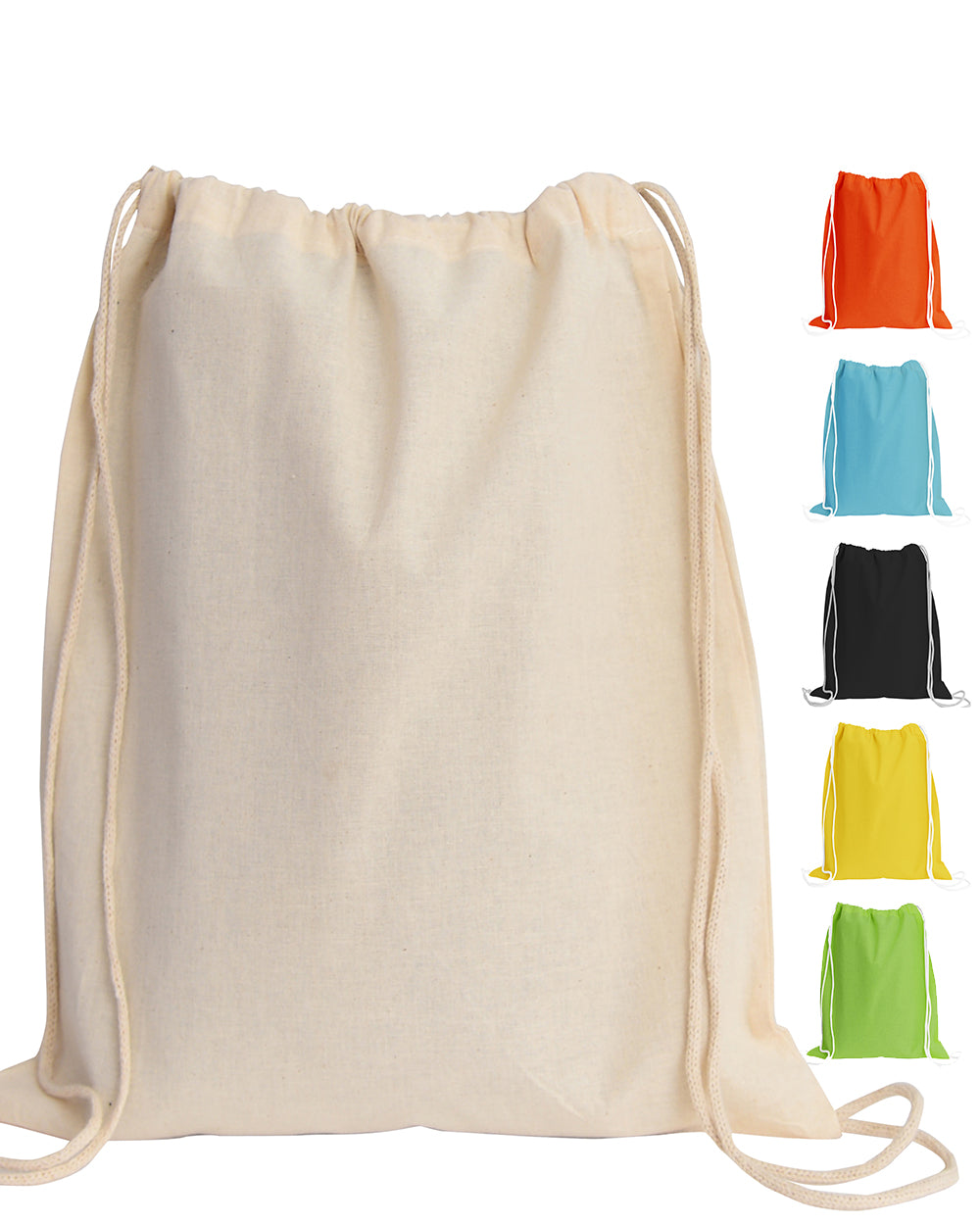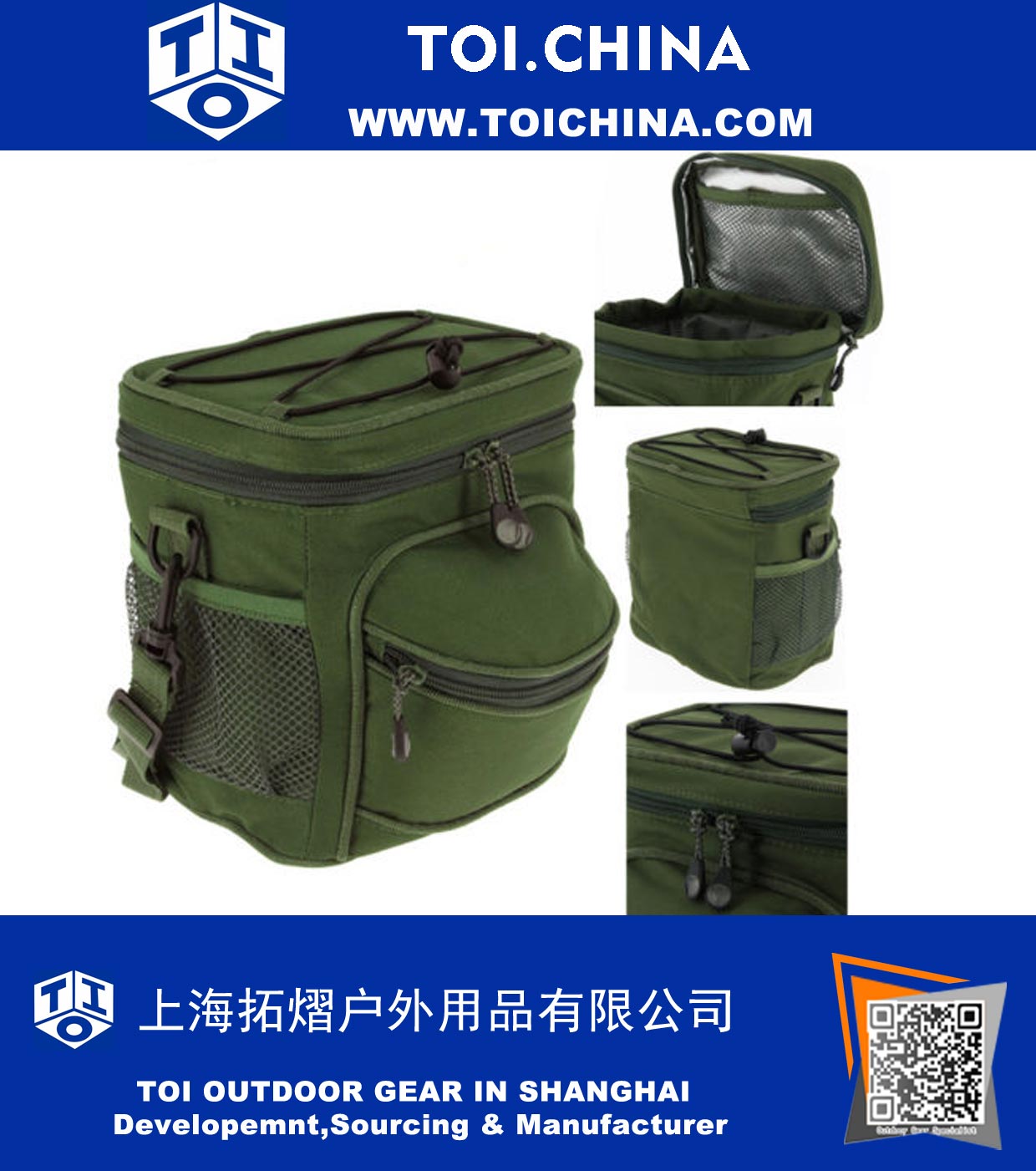Optimizing tote bag sizes involves balancing material yield, labor, and hardware costs. Strategic dimensions minimize leather waste and reduce production expenses.
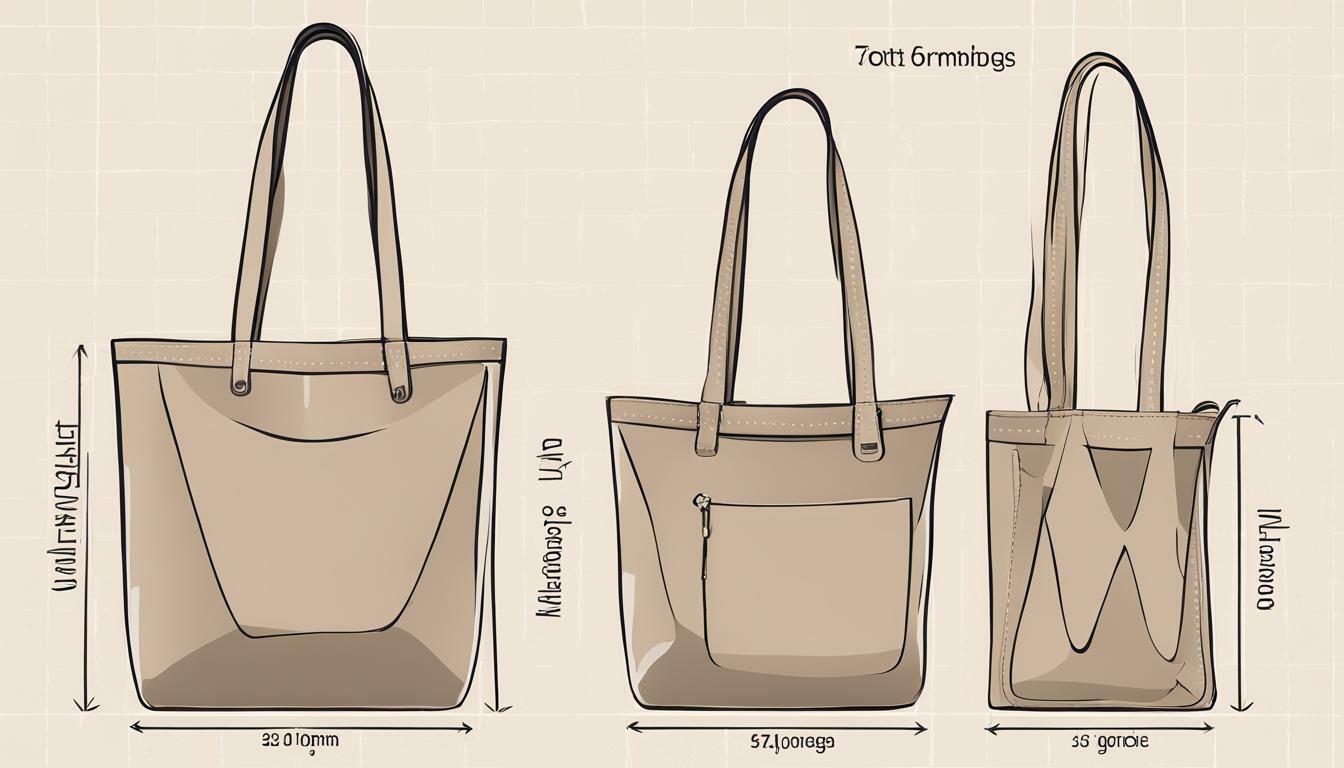
This analysis provides a detailed framework for understanding the financial implications of every centimeter in a tote bag’s design. By examining the core components of manufacturing expenses, from raw material consumption to the intricacies of skilled labor, brands can make more informed, profitable decisions.
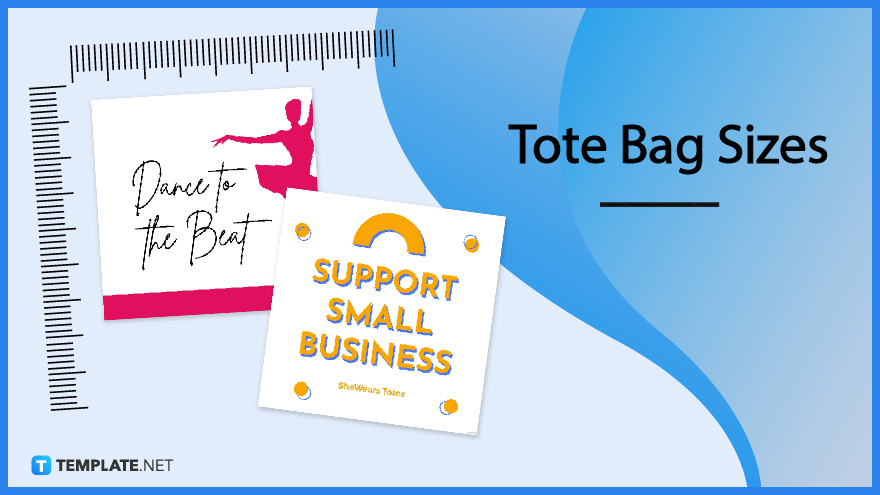
Table of Contents
- What Are the Primary Cost Drivers in Tote Bag Manufacturing?
- How Does Bag Size Directly Influence Material Yield?
- Which Tote Bag Dimensions Offer the Best Cost-to-Value Ratio?
- Beyond Dimensions: What Other Design Choices Affect Production Costs?
- A Strategic Approach to Sizing for Your Brand
What Are the Primary Cost Drivers in Tote Bag Manufacturing?
Understanding the final cost of a tote bag requires a granular look at its constituent expenses. While the sticker price reflects a combination of branding, marketing, and retail markup, the foundational manufacturing cost is determined by a few critical factors. For premium goods, especially those crafted from high-quality leather, these drivers are magnified, making optimization essential for profitability.
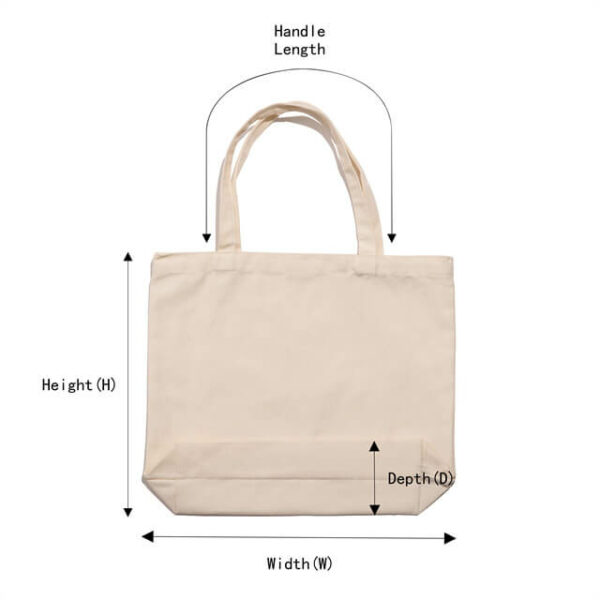
Material Consumption: The Largest Expense
The single most significant cost in a premium leather tote is the material itself. Unlike synthetic fabrics sold in uniform rolls, leather is sourced from animal hides, which have irregular shapes and natural imperfections. The cost is determined not just by the square footage purchased but by the usable area. A larger bag requires larger, continuous panels of flawless leather, which are harder to source from a hide. This dramatically increases the cost per unit. For a brand like Beldtura Leather, which uses only high-grade full-grain leather, maximizing the yield from each hide is a cornerstone of sustainable and efficient production. Every design decision must consider how the pattern pieces will fit onto a hide to minimize scrap, which is often the primary difference between a profitable and unprofitable design.
Labor and Craftsmanship: The Skill Factor
Labor represents the second-largest portion of manufacturing costs. This encompasses every stage from pattern cutting to final inspection. Larger bags often mean longer seams to stitch, more edge-painting or burnishing, and more complex assembly. A bag with numerous panels, pockets, or intricate handle attachments requires significantly more time and skill to construct. The expertise needed for precision cutting of leather, skiving edges for a clean fold, and executing flawless stitching lines is a substantial investment. This is why a simple, well-proportioned design can often be more cost-effective to produce than a smaller, more complex one, as the labor savings can outweigh the minor increase in material usage.
Hardware and Finishing Components
While smaller components, the cumulative cost of hardware and finishings can be substantial. This includes zippers, magnetic snaps, clasps, rivets, and protective metal feet. High-quality, solid brass or custom-plated hardware not only enhances the bag’s aesthetic and durability but also adds to its base cost. The choice of interior lining—be it canvas, microsuede, or unlined—also introduces another layer of material and labor expense. A larger bag may require a longer, more robust zipper or more reinforcement points, each adding incrementally to the final production cost.
How Does Bag Size Directly Influence Material Yield?
Material yield is the percentage of raw material that becomes part of the final product. In leatherworking, achieving a high yield is both an art and a science. The size and shape of a tote bag’s pattern pieces are the most critical variables in this equation. An seemingly minor adjustment of a few centimeters can have a profound impact on how many bags can be cut from a single hide, directly affecting the cost per unit.
The Mathematics of Pattern Nesting
Pattern nesting is the process of arranging a product’s pattern pieces onto a sheet of raw material to achieve the least possible waste. Think of it like a complex puzzle where the goal is to fit all the shapes—the bag’s front, back, base, gussets, and straps—onto an irregularly shaped leather hide. A tote bag with large, rectangular main panels can be deceptively inefficient. If its dimensions are just slightly too wide or tall, it may prevent a second set of panels from being nested alongside the first on a standard-sized hide, creating significant unusable offcuts. A smart design might reduce the width by an inch, allowing for a much tighter nest and a dramatic increase in material yield.
Standard Hide Sizes vs. Custom Dimensions
Leather hides are not uniform. A typical cowhide offers between 45 to 55 square feet of surface area, but this includes the neck, legs, and belly, which often have different textures, thicknesses, or more blemishes. The prime area, known as the “bend,” is the most desirable and consistent. When designing a tote, a manufacturer must consider these realities. A design that requires two very large, identical panels might only yield one bag per hide, as finding two flawless sections of that size is difficult. Conversely, a design with slightly smaller or more modular panels can be cut from various parts of the hide, maximizing its use and lowering the effective material cost per bag.
Minimizing Waste Through Strategic Sizing
Strategic sizing involves designing a bag’s dimensions with the raw material in mind from the outset. This could mean adjusting a tote’s height to align with the most common width of the prime section of a hide. It could also involve designing strap lengths that can be cut from the longer, narrower sections of the material that are often left over after the main body pieces are cut. By analyzing the average dimensions of their leather supply, manufacturers can develop a set of “golden ratio” dimensions for their products that consistently produce high yields and predictable costs.
Which Tote Bag Dimensions Offer the Best Cost-to-Value Ratio?
Finding the perfect tote bag size is a balancing act between market demand, user functionality, and production efficiency. While “standard” sizes exist, the most profitable dimensions are those that hit the sweet spot of perceived value for the customer and optimal material usage for the manufacturer. This is where market research meets manufacturing science.
Analyzing Common Market Sizes
Tote bags are generally categorized into small, medium, and large sizes, each serving a different purpose and having distinct cost implications. Understanding these categories helps in positioning a product effectively.
| Category | Typical Dimensions (H x W x D) | Common Use Case | Manufacturing Cost Implications |
|---|---|---|---|
| Small/Mini Tote | 8-10″ x 10-12″ x 4-5″ | Daily essentials: phone, wallet, keys, small tablet. | Lower material cost but can have higher labor cost per square inch if complex. Good yield from smaller hides. |
| Medium/Everyday Tote | 11-13″ x 13-15″ x 5-6″ | Work essentials: 13″ laptop, notebook, water bottle, makeup bag. | The “sweet spot.” Balances utility with efficient pattern nesting on most standard hides. Highest market demand. |
| Large/Travel Tote | 14-16″ x 16-20″ x 6-8″ | Weekend trips, gym bag, carrying a 15″+ laptop and documents. | Significantly higher material cost due to the need for large, flawless panels. Can lead to poor material yield. |
The “Sweet Spot”: Balancing Usability and Production Efficiency
The medium-sized tote often represents the pinnacle of cost-to-value. Its dimensions are typically large enough to accommodate a 13-inch laptop—a key requirement for the modern professional—without demanding excessively large cuts of leather. This size allows for efficient pattern nesting on a wide variety of hides, keeping the per-unit material cost manageable. For brands, this category provides the most flexibility in design while remaining profitable. Companies like Beldtura Leather meticulously engineer their everyday totes to embody this balance, ensuring the final product is both exceptionally functional for the user and intelligently designed for efficient, high-quality production.
Beyond Dimensions: What Other Design Choices Affect Production Costs?
While the height, width, and depth of a tote are primary cost factors, several other design decisions play a crucial role in determining the final manufacturing expense. These elements contribute to the bag’s functionality and aesthetic but also add layers of complexity and cost to the production process. A holistic cost analysis must look beyond simple measurements.
The Impact of Complexity: Pockets, Linings, and Gussets
The internal and external architecture of a bag is a major cost driver. Each additional pocket—whether zippered, slip, or patch—requires extra material, cutting time, and intricate stitching. A fully lined interior, for example, nearly doubles the amount of cutting and sewing required compared to an unlined bag. The style of the gusset (the side panel that gives the bag depth) also matters. A simple folded-base design is far less labor-intensive than a bag with separate, sewn-in side and bottom panels that must be perfectly aligned.
Choosing Cost-Effective Yet Durable Hardware
The selection of hardware sends a strong signal about a bag’s quality and has a direct impact on its cost. Solid brass zippers and clasps are significantly more expensive than those made from zinc alloy, but they offer unparalleled durability and a superior feel. The number of hardware pieces also adds up; a design with protective feet, multiple D-rings, and a complex strap attachment system will cost more to produce than a minimalist design with simple integrated handles. Smart design involves using high-quality hardware strategically where it matters most for function and longevity.
Reinforcement and Structural Elements
A high-quality tote is built to last, which often requires hidden structural elements. A reinforced base prevents sagging, bonded leather backings on straps prevent stretching, and internal stiffeners help the bag maintain its shape. Each of these components adds material cost and requires additional labor steps, such as skiving (thinning leather edges), gluing, and precise stitching. These features, while not always visible, are essential to a premium product’s performance and justify a higher production cost by delivering superior durability—a core principle for artisan brands.
A Strategic Approach to Sizing for Your Brand
Developing a successful tote bag line requires a cohesive strategy that integrates market needs, brand identity, and manufacturing realities. Sizing should not be an arbitrary decision but a calculated choice that supports the brand’s goals and financial health. This involves a multi-faceted approach that begins long before the first piece of leather is cut.
Defining Your Target Audience and Use Case
What is the primary function of the tote? Who is the intended user? A bag designed for a college student carrying textbooks and a laptop will have different size and durability requirements than a fashion-forward tote intended for light evening use. A brand targeting urban professionals must ensure its standard tote comfortably fits common laptop sizes and has practical organizational features. By clearly defining the use case, a brand can establish a baseline for its dimensions that is rooted in real-world customer needs, ensuring market relevance.
Prototyping and Material Testing
No amount of planning can replace physical prototyping. Creating samples of different sizes allows a brand to test not only the aesthetic and functional aspects but also the manufacturing efficiency. During this phase, pattern makers can experiment with nesting the prototype’s pieces on actual hides to calculate the real-world material yield. This is the moment to ask critical questions: Can a slight reduction in height save a significant amount of leather? Does the current handle length allow it to be cut from leftover material? This iterative process of testing and refining is crucial for finalizing a design that is both beautiful and profitable.
Aligning Dimensions with Brand Identity
Ultimately, a tote bag’s proportions must feel consistent with the brand’s overall identity. A brand known for its bold, oversized aesthetic will naturally gravitate toward larger dimensions, accepting the higher production costs as part of its brand promise. Conversely, a brand focused on minimalism and efficiency, such as Beldtura Leather, will favor clean lines and perfectly optimized proportions that convey a sense of intelligent, timeless design. The dimensions of the product become a physical manifestation of the brand’s values, communicating quality, utility, or fashion-forwardness before a customer even touches it.

